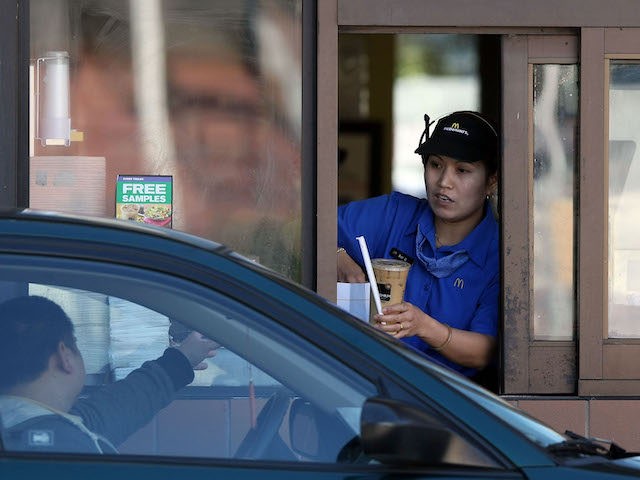As restaurants around the United States open up after more than a year of lockdown, owners are finding it difficult to hire people and some CEOs in the industry believe President Joe Biden’s coronavirus relief plan is adding to the problem by paying people to stay home.
QSR magazine reported on the phenomenon:
Fazoli’s CEO Carl Howard told QSR this affects restaurants up and down the ladder, from the front to the back and outside the restaurant. Distribution companies are struggling to find drivers because of unfavorable hours. Some suppliers raised prices in response. Product can be hard to come up. Specifically for hourly restaurant crew members, though, Howard didn’t mince words.
“If I was a kid and I didn’t really have a career path, and I’m 22, and I’m working at Fazoli’s where I’m trying to figure it out, and I’m making all this money to stay at home, I’m playing PlayStation till four o’clock in the morning. I’m not going back to work. Are you kidding me?”
Greene Turtle CEO Geovannie “Geo” Concepcion also commented on the situation:
[Conception] called the current dynamic, “the biggest, hands-down, challenge [we face].” The sports bar and grill chain responded with retention bonuses for every tier of the organization. And created a stipend program where short-staffed managers get compensated for extra work when employees don’t show up or the crew is short.
“The spirit of what we’ve learned in COVID is we’ve gotten far with our team by doing as best as we can and treating folks right, and making it clear that where there’s a challenge, we’re going to try to adjust it and make sure you’re treated fairly as we figure out what the long-term solution is.”
Concepcion added when the $300 a week benefit ended it could “usher in a next wave,” for the restaurant labor pool.
“Technology was a way to increase efficiency and it now probably becomes a mission-critical way to operate,” Concepcion said.
The magazine noted that in December 2020, there were 2.5 million fewer people employed in food service and drink places than February, or a 20 percent reduction in about nine months.
In March, 175,800 jobs were added to the restaurant industry, industry trackers report.
“Overall, restaurants added roughly 4.2 million jobs since April 2020—a month where 5.5 million jobs vanished,” the magazine reported. “At that juncture, the sector employed 6.3 million people, which represented the lowest figure in three decades.”
In March, restaurants employed more workers than any time since the crisis began, with 10.5 million workers on the job, Black Box reported. But that is still about a million fewer employees, year-over-year, and jobs are down 1.8 million from February 2020.
“While millions of restaurant jobs were lost to the pandemic last year, other industries have been hiring at an accelerated pace,” Black Box said, and added are “attracting employees away from the restaurant industry and contributing to the staffing challenges that already existed pre-pandemic.”
Statistics show at the start of 2020, only 13 percent of limited-service restaurant companies were fully staffed for hourly, non-management posts. Full-service restaurants had 38 percent of properties fully staffed.
In response to the shortage, some fast food outlets and chains are employing new tactics to attract job seekers, including Taco Bell, which is holding drive-through interviews, according to QSR. Chipotle is expanding its benefit to include paying for employees’ education costs and Whataburger is offering six-figure salaries for its General Managers.
One Mcdonald’s in Florida is paying people $50 to show up for an interview.
“At this point, if we can’t keep our drive-thrus moving, then I’ll pay $50 for an interview,” Blake Casper, the franchisee, said. He added that the rise in sales and the labor shortage is a “perfect storm.”
QRS asked Mathieu Stevenson, CEO of Snagajob, about the labor shortage in the restaurant industry.
“Many businesses are not yet operating at full capacity due to staffing shortages, and that could be attributed to different factors, including workers who aren’t comfortable working without a vaccine, stimulus checks, unemployment benefits, and tax refunds,” Stevenson said. “Many have even moved on from the food and beverage industry entirely due to a huge increase in available delivery and warehousing jobs.”
“Economists predict that there could be as many as 10 million more jobs between now and year’s end and restore the labor market to its pre-pandemic level,” Stevenson said. “But for employers, the fact remains that workers are hard to find.”
Follow Penny Starr on Twitter or send news tips to pstarr@breitbart.com

COMMENTS
Please let us know if you're having issues with commenting.